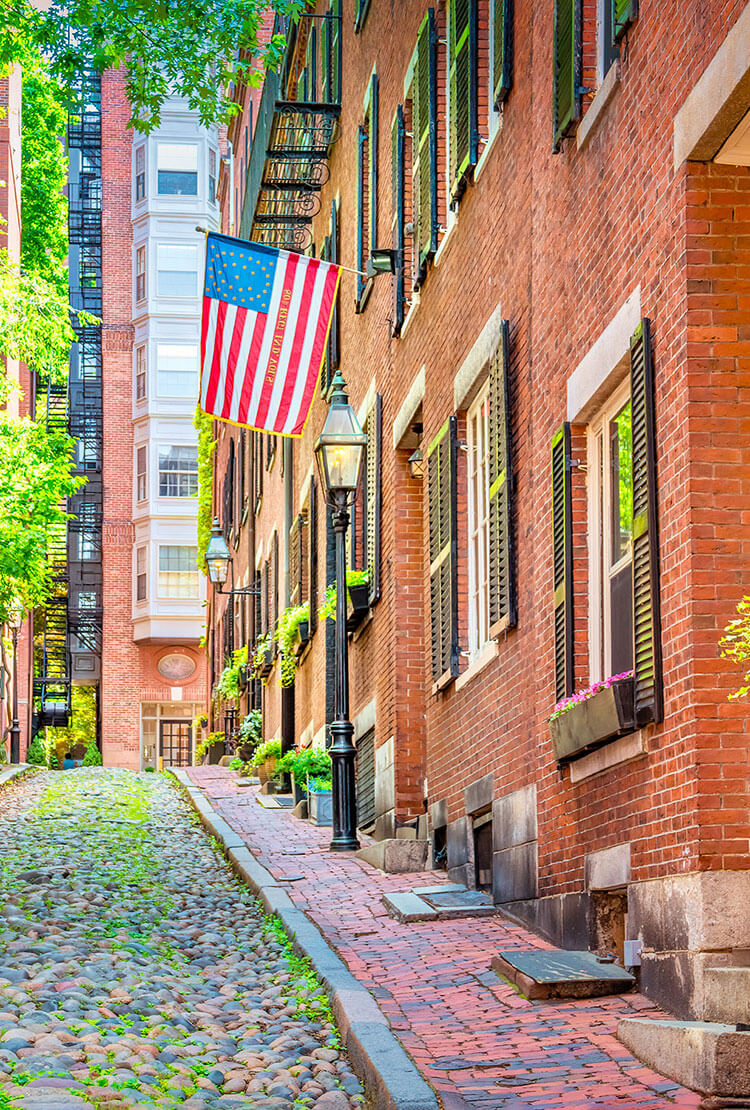There’s perhaps no better way to connect with the nation’s history than by walking, quite literally, in the footsteps of those who came before us. Though the U.S. is a relatively young nation, the country’s oldest streets still offer a fascinating glimpse through centuries of history, from Native American cultures to colonial influences. Discover the stories of six of America’s oldest streets.
Aviles Street – St. Augustine, Florida
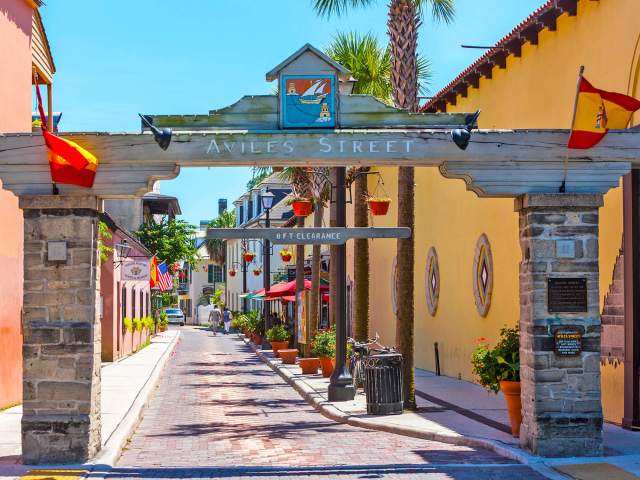
Established in 1565, St. Augustine is the oldest continuously occupied city founded by Europeans in the United States. St. Augustine’s city archaeologist estimates that Aviles Street was built in the early 1600s. It was once known as Hospital Street because of the location of St. Augustine’s Spanish Military Hospital, but today’s Aviles Street lies in the center of the city’s historic arts district. Visitors can stroll along the brick street and find galleries and shops full of leather goods, antiques, and jewelry, as well as sidewalk cafes and restaurants.
Before you head to St. Augustine’s panoramic and pristine beaches, make sure to visit the historic landmarks along Aviles Street. You can learn about early Spanish medical practices at the Spanish Military Hospital Museum and visit the St. Augustine Historical Society at the General Kirby House. Aviles Street is also home to one of the oldest buildings in St. Augustine. At the Father O’Reilly House Museum, you can learn about St. Augustine’s Catholic tradition and the Sisters of St. Joseph, who maintain the museum for visitors.
Elfreth’s Alley – Philadelphia, Pennsylvania
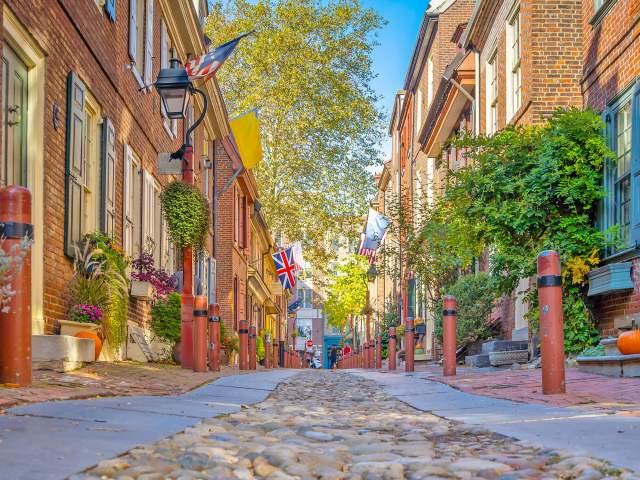
Elfreth’s Alley has been lined with the same 32 houses for more than 300 years. Though the area wasn’t in the original plans for Philadelphia, two landowners combined their properties to create Elfreth’s Alley in 1706, in order to provide a cart path for artisans and merchants who needed to travel to the Delaware River. During these early years, many people did business from their homes on Elfreth’s Alley — including grocers, shoemakers, and tailors — until factories appeared during the Industrial Revolution.
Today, Elfreth’s Alley is a National Historic Landmark welcoming visitors from all over the world. The street remains a celebration of working class America. Visitors can learn more about its history when they visit the Elfreth’s Alley Museum, located inside two of the homes on the street. The museum offers tours and shares the story of two dressmakers who ran a sewing business from their homes during the early days. If you want to see the inside of the historic homes on Elfreth’s Alley, visit Philadelphia on the first Saturday of December when all the houses are decorated for the holidays and open to the public.
Wall Street – New York, New York
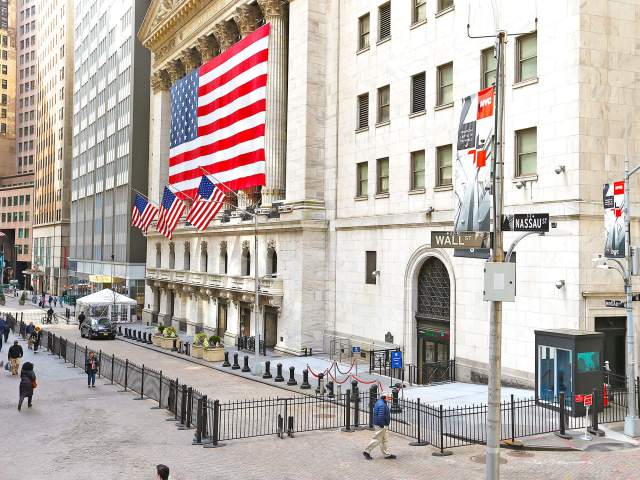
Visitors cannot see all New York City has to offer in one trip, but whether it’s your first visit or 10th visit, take the time to soak in the atmosphere on Wall Street. Although today’s Wall Street is the nation’s financial capital, this hasn’t always been the case. Dutch settlers, who settled in New York — previously named New Amsterdam — built a wooden wall in 1653, de Waal Straat, to defend against an expected English invasion. After the wall was demolished in 1699, Wall Street became the location of an enslaved people market until the mid-1700s.
Today, Wall Street is a bustling financial center with several historical landmarks and museums for visitors. Make sure to get photos by the famous Charging Bull and Fearless Girl statues. Some of the museums celebrating the area include the National Museum of the American Indian, located in the Alexander Hamilton U.S. Custom House, and the Museum of American Finance. You can no longer visit the trading floor of the New York Stock Exchange (NYSE), but you can grab a cup of coffee and listen for the famous sound of the 9:30 opening bell.
Bourbon Street – New Orleans, Louisiana
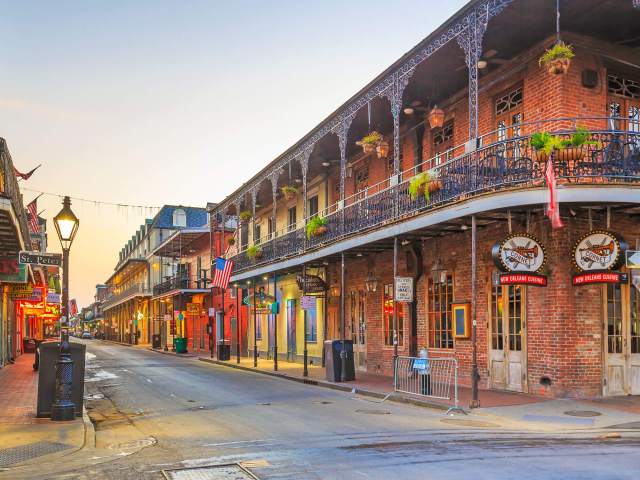
The architecture and atmosphere of New Orleans’ French Quarter carries a true distinction not found in other historic districts in the United States. Bourbon Street runs through its core. Named after the French ruling family when it was built in the early 1700s, Bourbon Street has long been the city’s center of culture and entertainment. As visitors walk along Bourbon’s narrow 14 blocks, they can take in the Spanish architecture — an artifact of a brief period of Spanish rule before Americans took control with the Louisiana Purchase.
New Orleans has undergone transformations throughout the ages, but Bourbon Street remains an adult playground full of music, food, cocktails and culture. Today’s visitors can enjoy a famous hurricane cocktail at Pat O’Brien’s, listen to live jazz at Preservation Jazz Hall, or dance the night away at one of the many other music venues. During the day, you can soak up some Creole culture and visit Marie Laveau’s House of Voodoo, take a horse and carriage ride around the French Quarter, and explore the shops on nearby historical Royal Street.
Acorn Street – Boston, Massachusetts
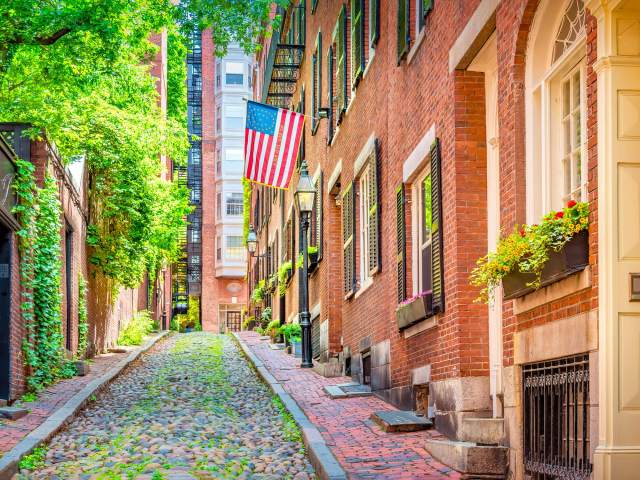
Boston’s character today is still rooted in its historical settlements and Revolutionary War history. Nestled in Beacon Hill, one of Boston’s oldest neighborhoods, is the single-block Acorn Street. Boston is full of historic streets, but Acorn Street maintains the original cobblestone from when it was built in the early 1800s. (Most of Boston’s other historic streets have been replaced with setts, or pavers.) Touted as one of the most photographed streets in the world, Acorn Street lies in close proximity to several of Beacon Hill’s historical sites.
Learn about the history of Acorn Street and the Beacon Hill neighborhood when you visit the Nichols House Museum, relax at Boston Common (America’s oldest public park), or catch a glimpse of the Massachusetts State House with its ornate golden dome. Acorn Street lies at the heart of Beacon Hill, where you can find restaurants, cafes, and boutiques full of curios and treasures.
River Street – Savannah, Georgia
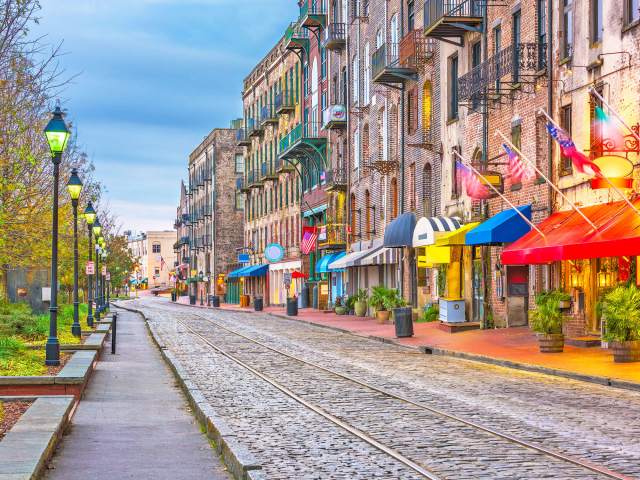
River Street is the centerpiece of Savannah’s rich history. The road is paved with stones from all over the world, which arrived as ballast on ships which sailed into Savannah’s harbor in the 1700s. This area of the city was constructed on the site of a former burial ground and has a dark history associated with the slave trade, causing it to be revered as one of the most haunted areas in the nation.
Today, River Street has a promenade along the Savannah River with shops, restaurants and bars frequented by locals and tourists alike. When you visit Savannah you might be lucky enough to attend one of the many events and festivals held at Rousakis Riverfront Plaza. Take a ride on the historic street car which travels up and down River Street or enjoy the many boutiques, galleries, antique shops, and restaurants that line its path.
More from our network
Daily Passport is part of Inbox Studio, which publishes content that uplifts, informs, and inspires.






